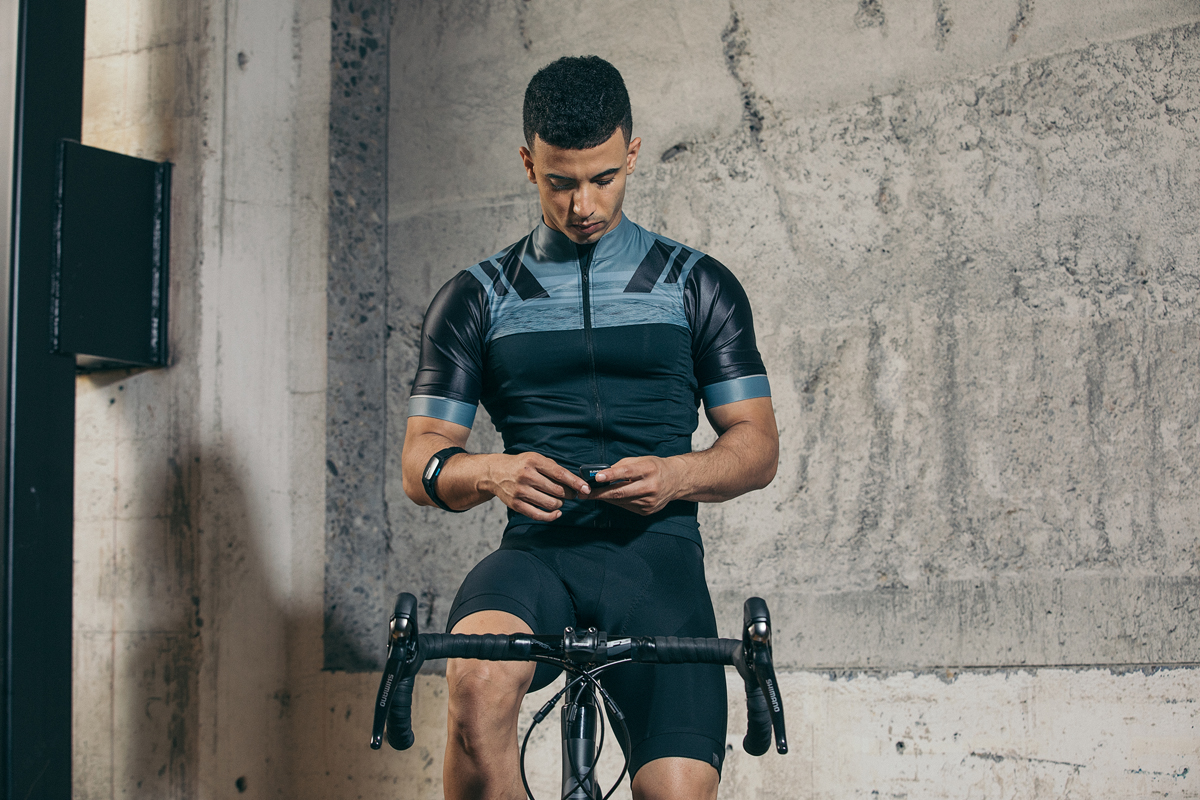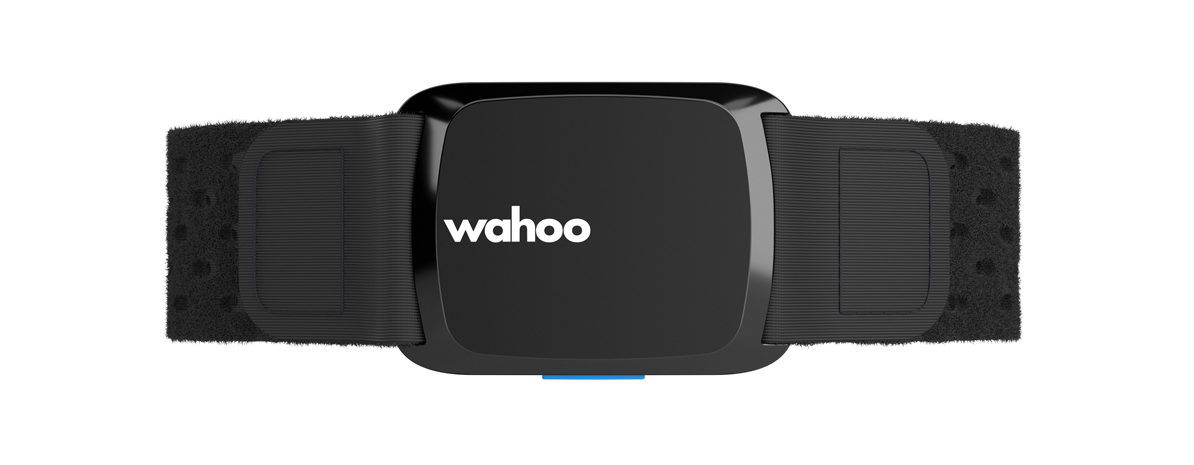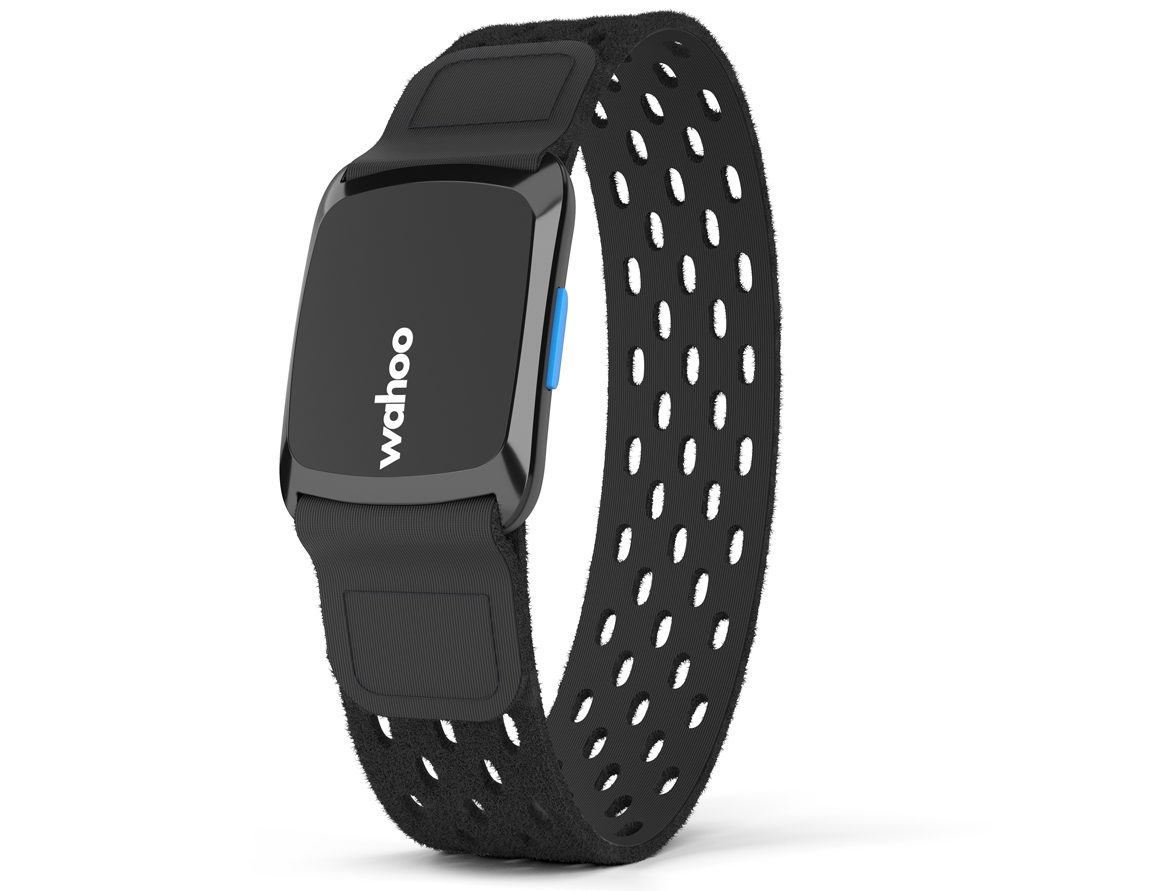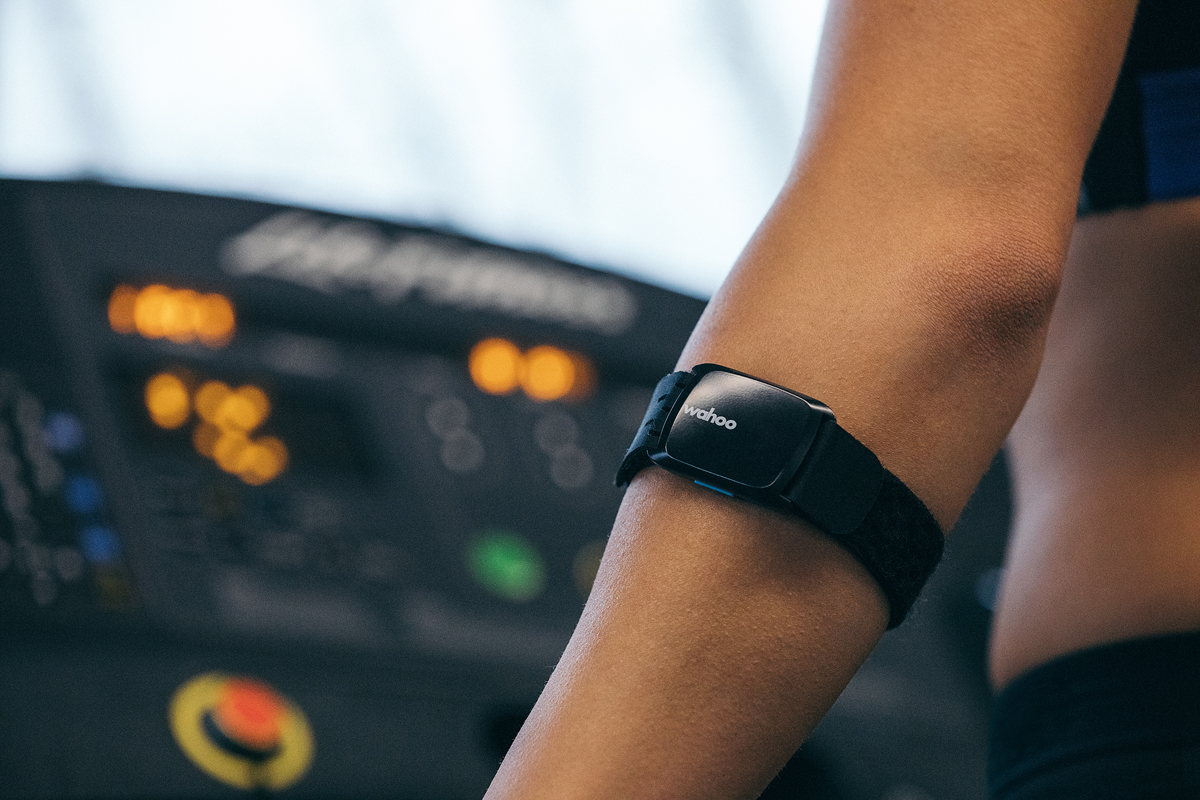It’s only January 3rd – hopefully you haven’t given up on those fitness resolutions just yet. Whatever your form of training, if your new year plans involve accurate and comfortable heart rate monitoring, Wahoo has something new up their sleeve. Literally – if you happen to be wearing a long sleeve jersey.
Following in the footsteps of the Wahoo TICKR chest straps, the new TICKR FIT brings the “latest in optical heart rate measurement” to your forearm. Using a trio of green LEDs around an optical sensor, the FIT claims to provide accurate heart rate and calorie burn data from the inside of your forearm for situations where a chest strap isn’t desirable.
To get the FIT to stay put on your forearm, the device ships with two separate straps. The smaller measures 260mm long while the longer of the two is 375mm. Both are 25.4mm wide. The straps have a sort of rubberized coating on the side which contacts your skin and an adjustable Velcro side on the other. Arm mounted heart rate monitors have to be pretty tight to stay in place while you work out and the FIT seems to stay put without becoming uncomfortable.
Built with a rechargeable battery and a custom magnetic USB recharging cable, the FIT claims a 30+ hour battery life before a charge is needed. Rated to IPX7 water resistant, the FIT should be fine to use in all but the wettest conditions. Weighing in at just 19g with the longer strap, the device is light enough to barely know it’s there.
Like all Wahoo products, the FIT is about ease of use and it delivers. Compatible with ANT+ or Bluetooth devices, the device powers on with a single button and tells you it’s on with the flash of a blue LED. Hold down the same button to turn off and after the red LED stops flashing, it’s powered down. Connecting it is also just as easy – simply turn it on, open the app you plan to use and select ‘pair device’. In terms of making their devices easy to use, no one does it better than Wahoo.
The Wahoo TICKR FIT sells for $79.99 and is available now.




